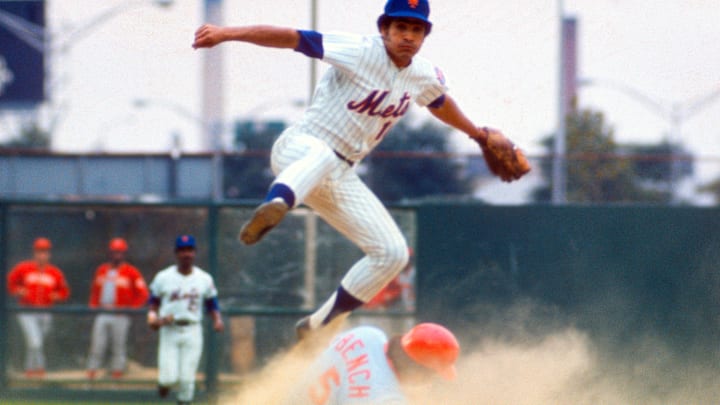There is always hope when a season begins. Every team starts off with renewed enthusiasm. The New York Mets had every reason to believe that they would improve upon three straight 83-win third-place finishes in the Eastern Division of the National League.
The 1972 season was marred by so many injuries to so many key players, as well as the devastation of the sudden death of Gil Hodges just before the start of the season, that it is incomprehensible that the club was even able to finish with a winning record. So it stands to reason that Mets management was lulled into a false sense of security that the team would elevate itself to the top of the Eastern Division by returning pretty much the same cast of characters as they had on the roster the year before.
New York Mets management would attempt another makeover before the 1973 season began
The trade of Nolan Ryan the year before turned out to be an epic failure. Jim Fregosi had a brutal initial campaign as the Mets third baseman in 1972, while Ryan began his reign as the Major League’s strikeout king with the Angels. Fregosi had gotten off to bad start by suffering a broken thumb before even playing a regular season game for the Mets. And management would use that as an excuse for the poor performance and convinced themselves (or maybe they were just trying to convince the fans and media) that he was still the answer at third base.
The other big trade that the Mets made prior to the ’72 season was to send away switch-hitting outfielder Ken Singleton, first baseman/outfielder Mike Jorgensen, and shortstop Tim Foli to the Montreal Expos in exchange for Rusty Staub. Like the Ryan-Fregosi trade, this one also did not pan out the way the Mets had hoped, as Staub was limited to a mere 66 games.
This time, before the calendar even turned to 1973, the Mets traded two fan favorites in starter Gary Gentry and reliever Danny Frisella for second baseman Felix Millan and lefty starter George Stone. I was not fond of the trade as I loved Ken Boswell at second base. I also felt that subtracting Gentry and adding Stone made the Met rotation quite unbalanced, especially when you added Ray Sadecki in as the fifth starter – with Jerry Koosman and Jon Matlack anchoring the staff, it left ace Tom Seaver as the lone right hander in the starting rotation.
Mets management was down on Gentry, the same way they were down on Nolan Ryan the year before. Unfortunately Gentry got hurt and the Mets were fortunate not get snake-bitten two years in a row. And who would have thunk it that Millan and, especially Stone, would play huge roles in the ’73 campaign.
The biggest, and most notable, subtraction was Tommie Agee. The Mets traded the talented centerfielder to the Houston Astros for lefty swinging outfielder Rich Chiles and some pitcher named Buddy Harris.
The Mets had brought in Willie Mays early on in the 1972 season at the behest of owner Joan Payson. Mays was an amazing player, often referred to as the best all-around player to ever play the game. However, it was a few years past his prime by the time he put on a Mets uniform. And his presence caused a lot of disharmony in the Mets clubhouse.
With Agee the incumbent in centerfield and 1969 World Series hero, and three first basemen already on the roster – Ed Kranepool, John Milner, and Jim Beauchamp – it was obvious that someone was going to be displaced and someone was going to be unhappy. That someone was Agee. Add to that the fact that Mays was being paid so much more than Agee, and that was enough for Agee to express his extreme displeasure to management. And, as would be the fate of any other player that M. Donald Grant viewed as a “malcontent” and “problem child,” Agee would be banished.
Agee had a down year in 1972, plagued by the same injury bug that hit just about every other player that passed through the Mets clubhouse, hitting just .227 with 13 home runs and stealing a career-low eight bases. It was the second season in a row that he would not play 120 games. But he was still only 29 years old when the Mets sent him packing to Houston. It would be a long time before the Mets would again have a talented player in centerfield like Tommie Agee.
As the Mets prepared to break spring training in 1973, with Yogi Berra at the helm for his second season, and a number of holdovers from ’69 still around, fans were just looking for something to believe in.
